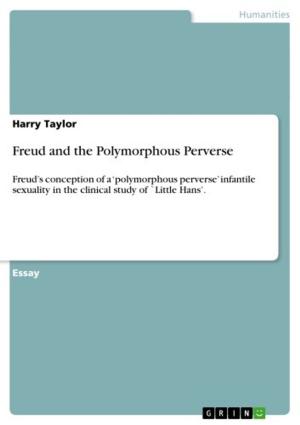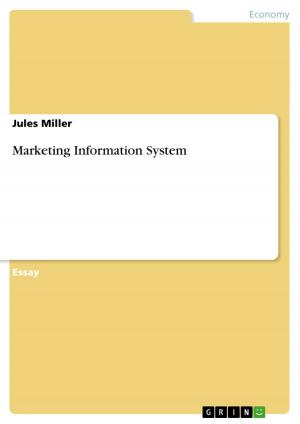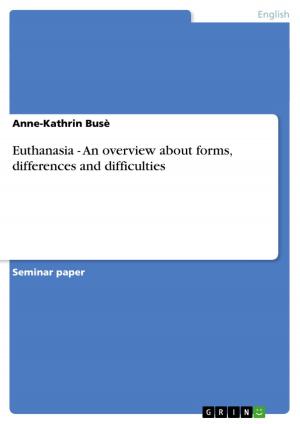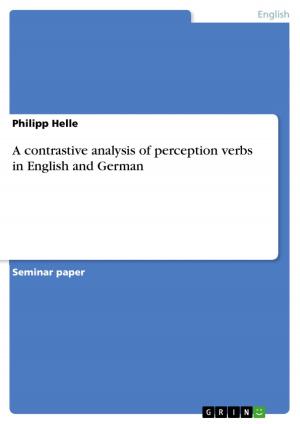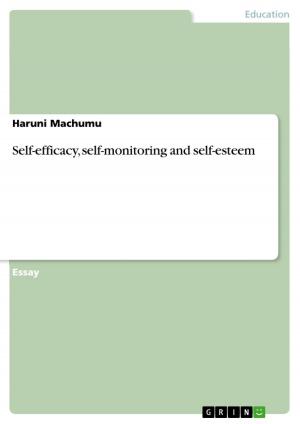The unity effect in Edgar Allan Poe's 'The Fall of the House of Usher'
Nonfiction, Entertainment, Drama, Anthologies| Author: | Xiumei Liu | ISBN: | 9783638801096 |
| Publisher: | GRIN Publishing | Publication: | June 15, 2007 |
| Imprint: | GRIN Publishing | Language: | English |
| Author: | Xiumei Liu |
| ISBN: | 9783638801096 |
| Publisher: | GRIN Publishing |
| Publication: | June 15, 2007 |
| Imprint: | GRIN Publishing |
| Language: | English |
Seminar paper from the year 2005 in the subject American Studies - Literature, grade: 1,7, University of Kassel, course: Hauptseminar 'Antebellum in American Short Fiction', 13 entries in the bibliography, language: English, abstract: 'A skillful literary artist has constructed a tale, ... there should be no word written, of which the tendency, direct or indirect, is not to the one pre-established design...' Edgar Allan Poe, who was praised as given the title of 'one of the greatest journalistic critic of his time' by literary critics, stressed unity, totality, and prescribed design. And 'The Fall of the House of Usher', is proved to be a very successful story to demonstrate Poe's adherence of his own principle of constructiveness and his structural art. The intention of this research paper is, therefore, to examine how Poe emphasized unity of effect in theory and how it is fulfilled in practice especially in one of his best-known stories. In a close reading of 'Usher', the author is above all impressed by the melancholic tone that Poe obviously intends to raise at the very beginning of this story. For this reason, how Poe implements his technique by making tone obedient to the unity of effect will be first of all examined in this paper. Obviously, tone should be identified with atmosphere. According to Poe, unity of setting is another important requirement for achieving the unity of effect in prose writing, which will be studied in the second section. If, as critics maintain, characters are skilfully adapted to the circumstances which surround them are a general device in Poe's tales, it is in 'Usher' in particular. The third section intends to show how characters are made to fit into the desolate house and dreary environment to achieve the desired effect in this tale. Finally, with the ideal arrangement of effective tone, setting, characters, Poe gains his battlefield to carry out unity of effect in plot in 'Usher'. In order to attain the unity of plot in literary writing, Poe stressed both 'unity of time' and 'unity of action', as essential parts in his theory on unity of effect. In 'Usher', both of these aspects are completely fulfilled through the brief time span in which the story happens, a coherent plot line and a 'mutual relationship' between incidents. Hence, Poe's emphasis on unity of plot in theory, and how it is accomplished in 'Usher' in the last section will be explored in the last section of this paper. Consistent with Poe's theory of 'unity', 'totality' and 'full design', four aspects, namely tone, setting, characters and plot through which Poe attempts to create a vision of 'unity of effect' in this tale are examined in this paper.
Seminar paper from the year 2005 in the subject American Studies - Literature, grade: 1,7, University of Kassel, course: Hauptseminar 'Antebellum in American Short Fiction', 13 entries in the bibliography, language: English, abstract: 'A skillful literary artist has constructed a tale, ... there should be no word written, of which the tendency, direct or indirect, is not to the one pre-established design...' Edgar Allan Poe, who was praised as given the title of 'one of the greatest journalistic critic of his time' by literary critics, stressed unity, totality, and prescribed design. And 'The Fall of the House of Usher', is proved to be a very successful story to demonstrate Poe's adherence of his own principle of constructiveness and his structural art. The intention of this research paper is, therefore, to examine how Poe emphasized unity of effect in theory and how it is fulfilled in practice especially in one of his best-known stories. In a close reading of 'Usher', the author is above all impressed by the melancholic tone that Poe obviously intends to raise at the very beginning of this story. For this reason, how Poe implements his technique by making tone obedient to the unity of effect will be first of all examined in this paper. Obviously, tone should be identified with atmosphere. According to Poe, unity of setting is another important requirement for achieving the unity of effect in prose writing, which will be studied in the second section. If, as critics maintain, characters are skilfully adapted to the circumstances which surround them are a general device in Poe's tales, it is in 'Usher' in particular. The third section intends to show how characters are made to fit into the desolate house and dreary environment to achieve the desired effect in this tale. Finally, with the ideal arrangement of effective tone, setting, characters, Poe gains his battlefield to carry out unity of effect in plot in 'Usher'. In order to attain the unity of plot in literary writing, Poe stressed both 'unity of time' and 'unity of action', as essential parts in his theory on unity of effect. In 'Usher', both of these aspects are completely fulfilled through the brief time span in which the story happens, a coherent plot line and a 'mutual relationship' between incidents. Hence, Poe's emphasis on unity of plot in theory, and how it is accomplished in 'Usher' in the last section will be explored in the last section of this paper. Consistent with Poe's theory of 'unity', 'totality' and 'full design', four aspects, namely tone, setting, characters and plot through which Poe attempts to create a vision of 'unity of effect' in this tale are examined in this paper.

